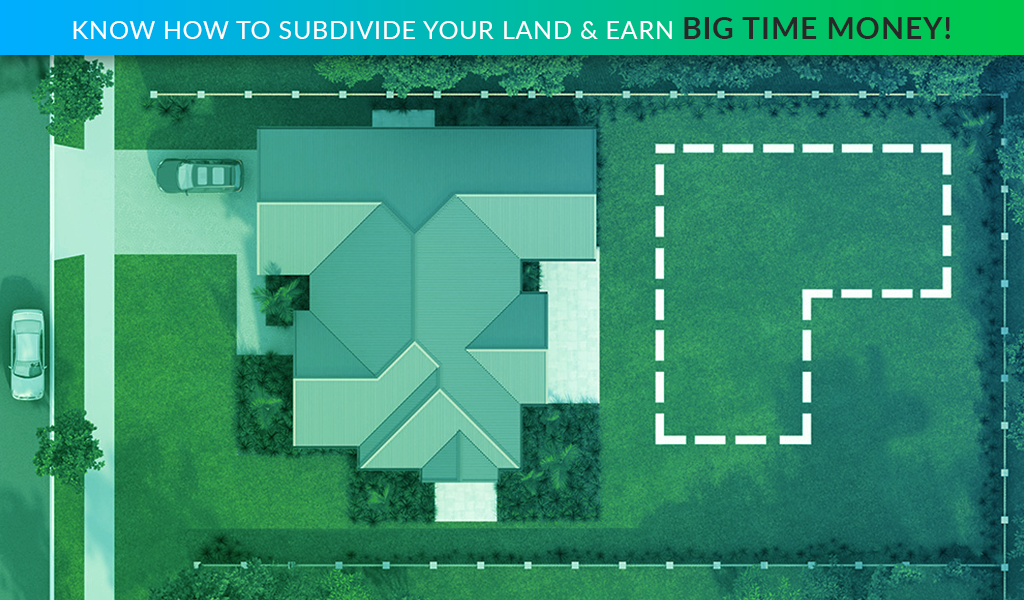Are you a landowner thinking about increasing the total value of your land? One feasible option is to subdivide your land to increase the total value.
The act of dividing a lot or a large parcel into multiple properties for sales or development purposes is considered as the Subdivision of Land.
Subdivision leads to the creation of a new township incorporation. Conducting the subdivision has potential to deliver a profitable property solution. Subdivision is a popular concept for land developers, real estate professionals, and builders.
Normally, the property owners subdivide their land for development purposes. The landowner may wish to sell a portion of the lot for financial benefits. The subdivision of land in the United States is dependent on the lot and block survey system. Before you subdivide, make sure to conduct a thorough market research and analysis to retain maximum profits on dividing the lot. Keep in mind, that there will be fewer barriers on sale if you sell the smaller divided lots rather than large parcels. Prior to the subdivision, estimate the size of the land. Remember, when development coincides with soaring market demand expansion is bound to happen.
Take a look at these key points for landowners when subdividing large parcels.

I. Plan your Subdivision
Firstly, evaluate the feasibility whether your land is worth subdividing. There are multiple risks and rewards, but a successful subdivision will increase ROI and flexibility. Don’t forget to calculate the net market value of the freshly subdivided lots, you can always contact a real estate professional who can provide more in-depth information regarding your property. Henceforth estimate the size and the scope of the project. If you have a large parcel of land, then you can conveniently subdivide it into multiple lots and gain profitable value. More lots equal more money. Think about it!
II. Subdivision Restrictions and Eligibility
You might think that subdividing your property is as simple as dividing your property into lots, however, in reality, it is slightly more complicated than it appears. You need to get approval from local councils or the homeowners association (if applicable). They hold a set of regulations, which you are required to follow to subdivide your land. Moreover, check out the local deed of restrictions that may cause any barriers or hurdles to your project. Ensure that easements access is defined properly for the newly subdivided property. You need to get confirmation regarding the proper zoning of the property from the city zoning department. They’ll advise on whether the land is feasible for residential or commercial purposes. Your property may or may not comply with the zoning rules. You can even hire an attorney to ensure that all rules and regulations are being followed and this will also allow for a smooth transition.
III. Subdivision Approval & Survey
After obtaining approval and applicable permits to subdivide your land, move ahead with the subdivision application. The local zoning department will lighten your burden, and guide you in the right direction. The subdivision process does require professional plans by the surveyor or land developer. A surveyor will survey the property, and follow all the land regulations. Subdivision may also require additional infrastructure.
If you’re planning to make future advancements, we recommend you retrieve a topographic survey of the land. The topographic survey is ideally used to map the contour of the ground. You can design adjoining roads or a driveway in your subdivision property. When all of the due diligence is complete, contact the local planning board and present your documents for the reviewing procedure. Approvals might take a longer duration as it is dependent on the local planning authority turnaround time.
IV. Final Stage - Approval!
Once you get the final approval, your land is officially subdivided. You will have separate legal titles for each lot. Now you can sell your subdivided lots and gain the financial benefits.
PROTIP – If the property already has “historical lot lines”, most of this work is already done for you!
Keep in mind, these are tricks of the trade and are provided as a guide to achieve lucrative benefits.
Strategize your purchasing goals, and seize land investment opportunities with The Land Store.


